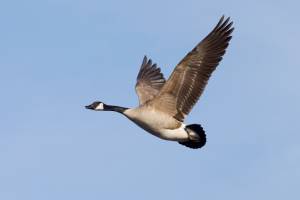 While the maple leaf and beaver are well-recognized symbols of Canada, the country has no official national bird despite the 450 avian species that call the Great White North home. The Royal Canadian Geographical Society hopes to rectify the situation with its National Bird Project.
While the maple leaf and beaver are well-recognized symbols of Canada, the country has no official national bird despite the 450 avian species that call the Great White North home. The Royal Canadian Geographical Society hopes to rectify the situation with its National Bird Project.
How It Works
In January of 2015, the Royal Canadian Geographic Society launched the National Bird Project on the Canadian Geographic website (link). Visitors to the website can cast votes online for the country’s first national bird and everyone is encouraged to participate. When voting is complete, members of the society plan to lobby the government to make the top pick official with an Act of Parliament. The objective of the effort is to name a Canadian national bird by 2017—the year the country will celebrate its 150th birthday. Over 20,500 votes have already been cast. Managing editor of the Canadian Geographic, Nick Walker, has described the response as “overwhelming.”
There are 40 primary candidates listed on the website, but you can also nominate another if you feel it should be on the list. Some of the species categories include songbirds; upland and game birds; loons, waterfowl and seabirds; woodpeckers and hummingbirds; wading birds, gulls and shorebirds; and raptors.
Unofficial National Birds of Canada
The five frontrunners in the voting represent several avian species. There are two loons, two songbirds and a raptor.
- Common loon
The common loon currently holds first place. It is a diving waterfowl and can be found in every province and territory. A common loon typically weighs 2.5 to 6.1 kg. It is the provincial bird of Ontario.
- Snowy owl
The snowy owl is classified as a raptor. It is white with black and brown markings and is easily recognizable. The snowy owl is one of the biggest types of owls and typically weighs from 1.6 to 3 kg. This species is well adapted to the cold and even has feathers on its feet and toes. The snowy owl is the provincial bird of Quebec.
- Gray jay/whiskey jack
The gray jay (also called the whiskey jack or Canadian jay) is a songbird and is known to be very friendly toward humans. It lives primarily in the boreal forests that exist throughout Canada and is found in every province and territory.
- Canada goose
The Canada goose is an easily distinguishable, large waterbird that can weigh 3 to 9 kg. It favors Canada’s rivers and freshwater bodies and often migrates to the southern United States during the winter.
- Black-capped chickadee
The black-capped chickadee is a diminutive songbird and is currently in fifth place in the voting. It is found throughout Canada in forests, woodlands and backyards.
Other Countries’ National Birds
- Australia
The emu is Australia’s national bird. They are soft-brown and cannot fly. Emus can grow up to 1.9 meters (6.2 feet) and run up to approximately 50 km/hour (30 mph). Their legs and feet are extremely strong and can even rip metal wire fences.
- Bahamas
The American flamingo is the national bird of the Bahamas. It is the largest type of flamingo in the Americas. Most of the plumage of American flamingos is pink, as are their legs.
- India
The brilliantly colored peacock is the national bird of India. Female peacocks are very plain, but males have a blue body and a long train of beautiful feathers that form a fan shape.
- United States
The bald eagle was named the national bird of the United States in 1782. It was picked for its majestic looks, longevity and boundless spirit of freedom.
The Royal Canadian Geographic Society, in partnership with Canadian Geographic, has embarked on a quest to officially name a national bird of Canada. When chosen, the species will be elevated to a new level of fame, as is the case with the national birds of other nations.


